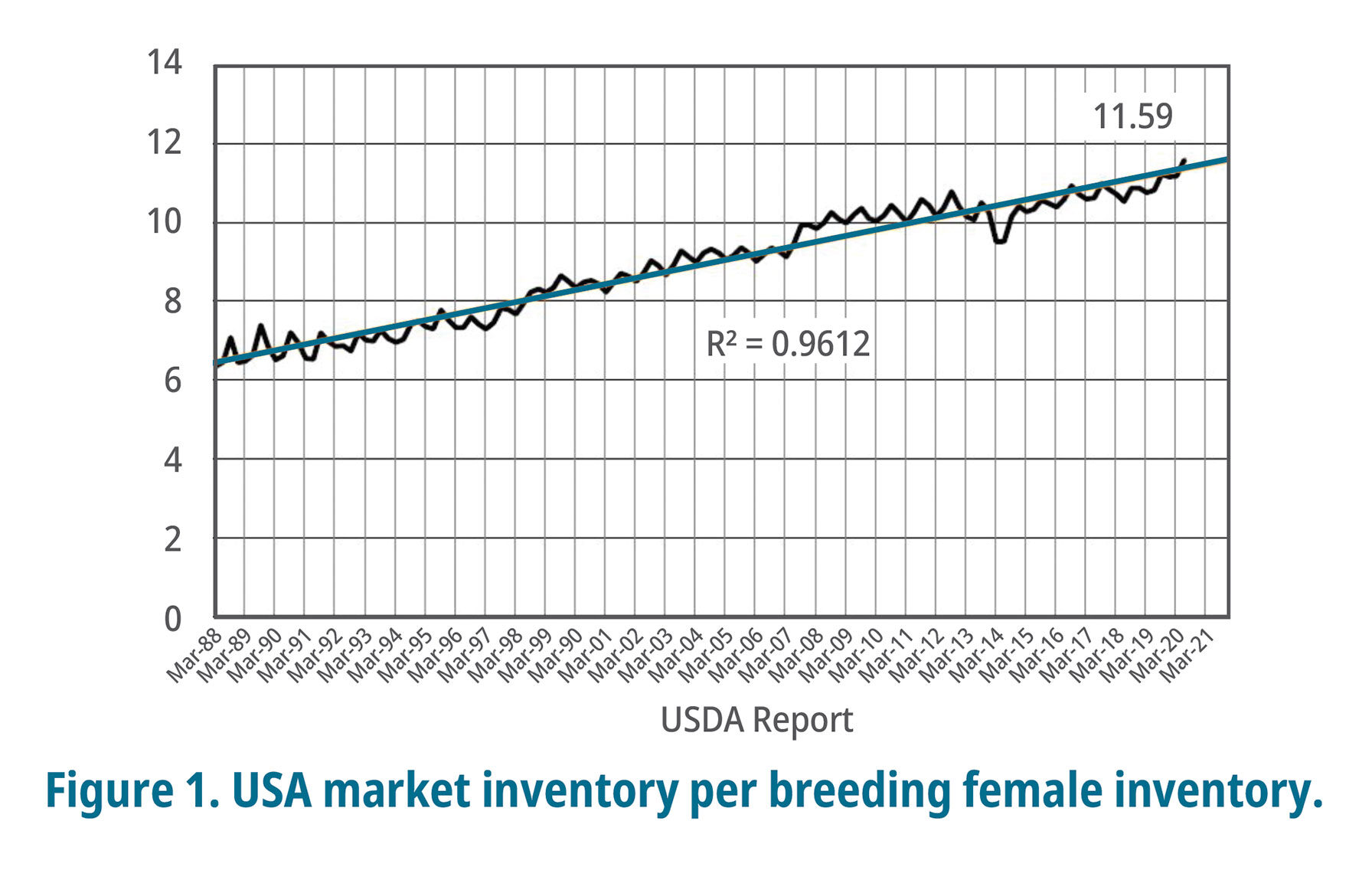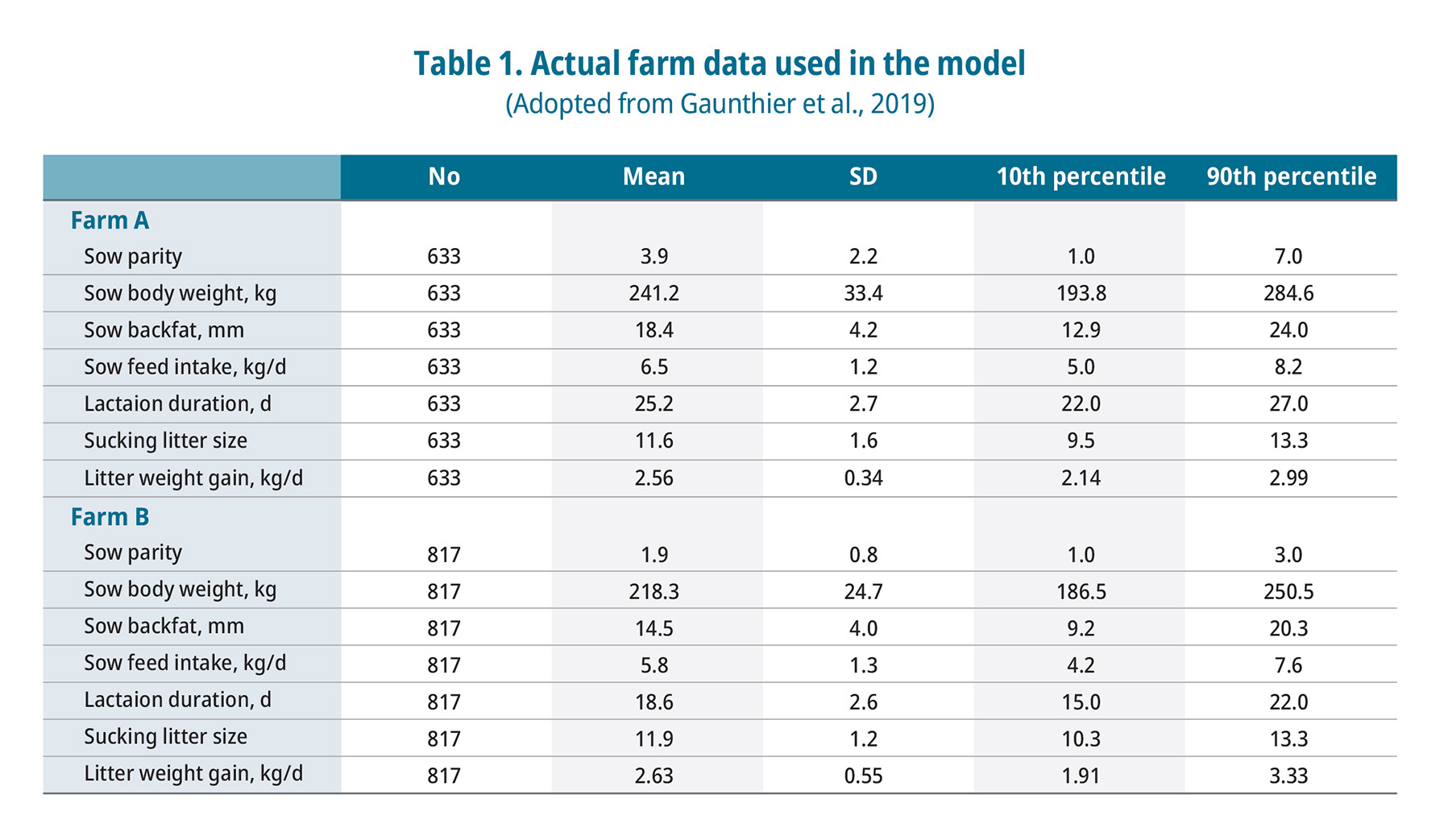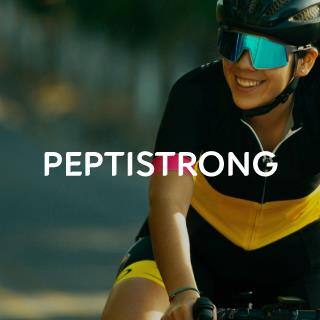Amino acids requirements of the modern lactating sow
2020년 09월 25일
- Nutrition
- Swine
Background
The modern sow has been highly selected for maximum litter size and milk production. In fact, we had to coin a new term to describe these animals, hyper-prolific. Litter size in the EU has increase by 1.5 pigs/litter from 10.8 to 12.3 pigs from 2001 to 2011 (Teagasc, 2011). Recent data from the Danish Pig Research Center reported that productivity increased by 1.1 from 2016 to 2017 (Seges, 2017). They reported that Denmark is now weaning 14.6 pigs/litter. The United States Department of Agriculture (USDA) does not report total litter size born, but pigs weaned per litter. One method in the USA to monitor sow productivity, is dividing market hog inventory by the number of reported breeding females (Fig. 1). The USA has effectively improved sow productivity by 5 pigs/litter since 1988 to present.

These tremendous increases in nursing litter size pose interesting challenges to nutritionist. While litters size of 13-plus are common, voluntary feed intake has not increased and some may say it has decreased. This creates a unique challenge to meet the sows energy and amino acids (AA) requirements for milk production without excessive lactation weight loss, which can decrease future litter size and hamper overall lifetime productivity.
SID lysine
The recent Nutrient Requirements of Swine (NRC, 2012) attempted to respond to these concerns using a modeling approach. The model can be downloaded free at: https://www.nap.edu/login.php?record_id= 13298&page=https%3A%2F%2Fwww.nap.edu%2Fdownload%2F13298. The NRC sow model is driven primarily by litter size and milk production estimates using litter weight gain. A note of caution, if you allow the model to use predicted ADFI, it will likely over predicted sow actual intake. We strongly suggest you to use actual ADFI when using the model. Additionally, the model does not allow for nursing growth rate per pig to exceed 300 g/day.
A new model developed by French and Canadian researchers (Gaunthier et al., 2019) has been recently proposed. This model does include ADFI, but also sow bodyweight, parity and backfat (BF). They tested the model with 1,450 lactation records from two different farms. They assumed that the ideal amino acid profile was obtained for an average sow weighing 180 kg, consuming 5.5 kg/d, with a litter growth rate of 2,200 g/d, and a litter size of 11 pigs. Energy requirement as expected was highly correlated with nursing litter size (R2 = 0.95, P<0.001), but was also influenced by sow BW. SID lysine (Lys) requirements was differed between the two farms and was influenced by week of lactation and parity of the sow. However, ADFI was the primary factor (R2 = 0.51, P<0.0001) and to a lesser degree litter growth rate (R2 = 0.27, P<0.0001).

The largest difference between the farms was the parity structure, with Farm A at average 3.9 and Farm B a relatively young herd at 1.9. This likely accounts for most of the BW differences (241.2 vs. 218.3 kg) and in ADFI (6.5 vs. 5.8 kg). Modelling of ME (Mcal/day) and SID Lys requirements of the two farms did not vary greatly on a daily basis (22.61 Mcal and 43.1 g vs. 22.49 Mcal and 43.6 g SID Lys/day for Farms A and B, respectively). However, due to the ADFI difference, energy and SID Lys concentration needed in the diets are quite different. Daily ME requirements (3.478 and 3.876 Mcal/kg of feed) cannot be met in a feasible diet, so sows would be expected to lose BW during lactation. However, the SID Lys dietary percentage were predicted at only 0.66 and 0.75% for Farm A and B. Running the Farm A and B data (BW, ADFI, litter gain) through the NRC (2012) sow model, we obtain SID Lys estimates of 45.3 and 44.9 g/day. Both if these models are mechanistic in their approach, maintenance, plus milk yield and resulted in fairly close estimates (+/- 2 g of SID Lys). However, both models SID Lys estimates appear quite low when compared to common lactation diets fed in North America (0.95% SID Lys).
Recently, three groups reported their findings on SID Lys intake on sow performance (Gourley et al., 2017, Graham et al., 2017 and Bruder et al., 2017). Gourley et al. (2017) reported sow BW loss, litter weight gain, weaned to serve interval were improved with increasing dietary SID Lys level. Lactation performance was maximized feeding a 1.05% SID Lys level. Graham et al. (2017) fed 42.8, 48.9, 57.4, 64.5 or 71.1 g/day of SID Lys. ADFI did not differ among treatments and averaged 5.9 kg. Litter weight gain was increased linearly (P<0.05) from 2.04 to 3.47 kg/day from lowest SID Lys intakes (42.8 g/day) to the highest (71.1 g/day). Interestingly, running these litter weight gains results in the NRC (2012) model resulted in the following estimated SID Lys daily requirements (42.8 vs.35.2; 48.9 vs 37.9; 57.4 vs. 42.0; 64.5 vs. 45.0 and 71.1 vs 47.0 g/day for actual observed SID Lys intake/day vs NRC model estimates). Additionally, Bruder et al. (2017) using gilts standardized to 13 pigs/litter fed diets containing dietary SID Lys level of 0.90, 1.03, 1.15, 1.28 or 1.40%. L-Lys-HCL additions ranged from 0.25 to 0.44%. Average BW was 199.7 kg and ADFI average 4.6 kg/day. Increasing dietary SID concentration decreased BF in linear manner (P<0.03) as observed by Gourley et al. (2017). Litter gain was increased in a linear (P<0.06) fashion as observed by both Gourley et al. (2017) and Graham et al. (2017).
Recent published reports strongly suggest that both the NRC (2012) and new French model (Gaunthier et al., 2019) under estimate SID Lys requirements under commercial conditions. Newer data suggest than litter weight gain (milk production) is highly sensitive to SID Lys percentage in the diet. Most North America nutritionists agree that a minimum of 60 to 63 g/day of SID Lys is needed to maximum current litter weight and subsequent litter size hyper-prolific sow weaning in excess of 11 or more pigs/litter.
Other essential amino acids
The order of limiting amino acids for lactating sow clearly demonstrate by Soltwedel et al. (2006). Using PUN as their response criteria they reported that Lys first limiting. In their second experiment they offered both threonine (Thr) and Valine (Val) separately or in combination to sows. The feeding of supplemental Thr alone or in combination with Val decreased PUN as compared to Val supplemental only.
Threonine
Little research has been conducted on the Thr requirement of the lactating sow during the past two decades. The Canadian team at the Prairie Swine Center led by Cooper et al. (2001) evaluated total dietary Thr levels of 0.40, 0.45, 0.50, 0.55, 0.60, 0.65 or 0.70% in two set of diets (Low Lys or High Lys). The Low Lys diets contained 0.80% total Lys, whereas the High Lys contained 1.06% total Lys. Litter size was standardized at 11 pigs/litter minimum for all sow. Surprisingly, the authors reported dietary Lys level had no effect (P>0.10) on any parameter measured. This could be due to high ADFI observed for parity 1 (6.90 kg/day), parity 2 (7.40 kg/day) and parity 3+ (7.20 kg/day). Litter weight gain was maximized as determined by regression analyses (quadratic P<0.05) at 0.53% total dietary Thr regardless of sow parity. PUN were minimized at day 10 and 18 of lactation at total dietary level of 0.54% Thr. They concluded that total Lys intake of over 58 g was not beneficial and that total dietary Thr intake to minimize sow tissue losses and maximize litter weight gain was between 36 to 40 g/day of total dietary Thr. Similarly, Schneider et al. (2005) did not find any improvement (P>0.10) on sow performance feeding over 0.50% TID Thr or a 57% ratio.
However, Greiner et al. (2019) examining Thr:Lys ratios of 52, 60, 68, 76 and 84% while providing 58 g/day of SID Lys reported several responses to Thr. The percentage of sow bred by 10 day post-weaning, subsequent litter size and litter weight gain all responded (quadratic P<0.02) to Thr:Lys ratio with optimum response at 68% SID Thr:Lys. These current findings strongly suggest that the NRC (2012) ratio of 63% is low for the modern hyper-prolific sow.
Valine
The early work of Richert et al. (1996) showed that increasing dietary total Val from 0.85 to 1.15% linearly (P<0.02) increased litter weight, suggesting a Val:Lys ratio in excess of 120%. Gaines et al. (2000) reported increasing total dietary Val:Lys over 86% had no positive impact on lactation performance. But feeding below 73% Val:Lys ratio negatively impacted performance. Similarly, NRC-42 committee (Carter et al., 2000) reported increasing total Val:Lys ratio from 88 to 138% had no impact (P>0.20) on pre-weaning mortality, sow BW, litter weight gain or days to return estrus. All these studies left the industry totally confused. CJ America-Bio conducted a mini-survey of SID Val:Lys minimum ratios with 10 integrated swine systems in the USA. The average minimum specification for SID Val:Lys in lactation was 67.9, ranging from 64 to 72%.
Recently, Strathe et al. (2016) and his Danish colleagues examined SID Val:Lys ratios from 76 to 97% in sows standardized with 14 pigs/litter 48-hr post-farrowing. Increasing SID Val:Lys ratio had no impact (P>0.10) on number of pigs weaned, litter weight gain, sow BW or BF at weaning. They concluded that the SID Val:Lys ratio was not greater than 84%. However, Greiner et al. (2019) report no responses (P>0.10) when increasing SID Val:Lys ratio from 50 to 100% in litter gain or wean to service interval. The lack of response may have resulted from the low crude protein (12.96%) fed, as other essential or semi-essential AA could have been limiting thus masking any response to dietary Val. The recent NRC (2012) recommends at ratio of 85% supporting the work of Strathe and co-workers (2016).
Conclusion
The modern hyper-prolific sow has tremendous ability to milk to support litter growth rate in excess of 3.0 kg/day. Without question, daily SID Lys intake is critical to minimize tissue loss and maximize subsequent litter size. The current academic mechanistic models appear to understand Lys requirement when compared to actual field data. Recent research data suggest the NRC (2012) suggested SID Thr:Lys at 63% is low. SID Val:Lys ratio is still being debated, but the preponderance evident suggest the SID Val:Lys ratio is close to the NRC (2012). We suggest adjusting dietary SID Lys level based on observed ADFI to provide a minimum of 60 g/day SID Lys. Additionally, we suggest that SID Thr:Lys be set at 68% and SID Val:Lys at 85%.
























































